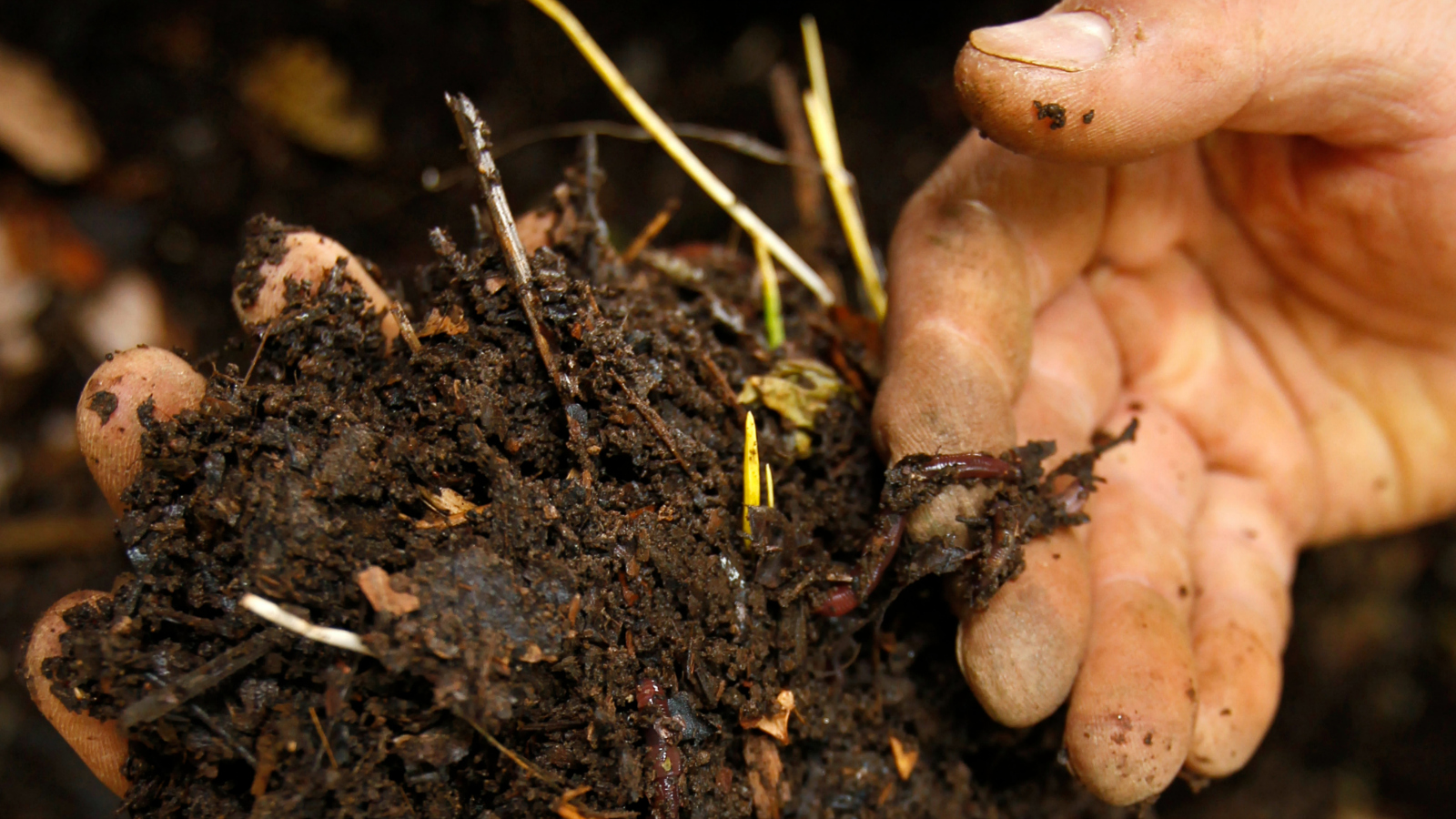Q. Dear Umbra,
I’m tired of my compost not cooking. Can I just bury it around my plants and pull the stray volunteer seedling that emerges?
Kristina
Cleveland, Ohio
A. Dearest Kristina,
I’m hearing some frustration from you here. Perhaps also disappointment, annoyance, resentment, even a twinge of perturbedness — enough to make you want to throw in the towel on this whole composting enterprise. I understand, and what’s more, assure you that you’re not alone. Composting sometimes requires trial and error before you get the hang of it, and you’re not the first to think about digging a pit out back and burying the whole uncooked mess.
So, could you simply disappear your as-yet-uncomposted pile around your gladiolas, gangland-style? Well, yes (and more on that below). But Kristina, I urge you not to give up on your compost just yet. I’ll bet that one of only a few problems is to blame for its poky transformation from scraps into garden gold, and a few simple fixes can get things back on track. So let’s pull out the pitchfork and dig in.
A compost pile needs three basic things to produce rich compost: heat, water, and oxygen. The aerobic bacteria (that is, the ones that need oxygen) do much of the dirty work of breaking down your scraps, and they need adequate airflow to function; without proper working conditions, they essentially go on strike, and anaerobic bacteria take over. These anaerobic microorganisms still get the job done, but much more slowly, and they produce methane to boot — so it’s better to keep the aerobic bugs happy. Water is also important: too much and that airflow gets suffocated, too little and the bacteria can’t survive. The pile’s heat depends on this oxygen and moisture, and also on the mix of ingredients and size. I’m guessing we’re dealing with an imbalance to at least one of these big three elements in your compost pile, Kristina.
To figure out which one, head out back and give the pile a good look. Poke around with a stick or shovel; grab a handful and squeeze; dig into the middle of the heap. What do you see and feel?
It’s too wet: If you discover slimy layers, and/or you can squeeze more than a few drops of water from a handful, you’re probably running short on oxygen. To fix this, get in there with a shovel or pitchfork and give the pile a good turning over, fluffing it up as you go, to aerate it. Consider adding some more dry materials, such as crispy leaves, shredded corncobs, or straw; tossing in twiggy ingredients will also help maintain space for better airflow. Continue turning the pile every couple of weeks to make sure oxygen is really getting in there. Ideally, the pile should feel like a damp sponge. You might also want to add a tarp or other cover to protect it from the elements, or the next cold November rain could make all your work for naught (as well as make you nostalgic for the era of bandana headbands).
It’s too dry: On the other hand, if your pile is all dry, woody material or crumbly stuff, you’ll also need to grab that pitchfork and get turnin’. But this time, enlist a sprinkler or drip hose to add some much-needed water to the mix. Throwing in more wet materials, such as kitchen scraps or yard clippings, will also help.
The balance is off: Maybe it’s not only the moisture content. Could it be your mix of “greens” (high-nitrogen items) and “browns” (high-carbon items) in the pile? You want to keep these elements in the proper ratio for optimal composting; head over here for more on how to pull that off. Backyard piles are often short on those nitrogen-y greens, so adding food scraps, alfalfa pellets, blood meal, or chicken manure can kick-start the action. It’s also helpful to chop or shred materials more finely, especially additions like eggshells or brush trimmings, for quicker decomposition. Have at it with a shovel or machete, or run over materials with your lawnmower.
It’s just too small: Here’s an easy one — compost piles need to be about three cubic feet in size to hit those higher temperatures you’re looking for. Is yours undersized? Collect more ingredients to get things cooking.
Or maybe your level of discontent with your compost pile is so great, you don’t have the wherewithal for all this troubleshooting. This brings us back to your original question: Can you just bury all this stuff? You can indeed: This is its own form of composting, in fact, called pit composting. Just dig a 12-inch-deep hole and fill it with your organic trash (just no dairy, meat, or pet poop, a rule that applies to regular compost piles, too). Repeat as necessary, and the soil microbes will do their thing. If you’d like to get a little fancier about it, you might also try trench composting, where you bury the scraps between rows of your garden for added fertilizer next season.
As it happens, now is a great time for a compost makeover. Decomposition will slow or stop during the coldest months, but your newly refurbished pile will be ready for a fresh start come spring. Think of it this way: You’ll be way ahead on your New Year’s resolutions this year.
Subterraneanly,
Umbra



